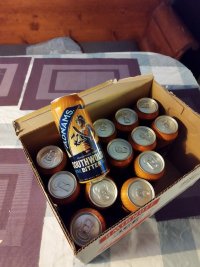Yes I am aware, but there are also regional differences. For example Theakston's bitter or the Timothy Taylor LL or Boltmaker are notably drier and more bitter than lets say Fuller LP or Adnams Southwold.
My plan is to reduce the gravity from 1.040 to 1.038 and raise FG to 1.008 from 1.007 for a slightly lower attenuation and hopefully an end product finishing at almost exactly 4% abv.
My plan is to reduce the gravity from 1.040 to 1.038 and raise FG to 1.008 from 1.007 for a slightly lower attenuation and hopefully an end product finishing at almost exactly 4% abv.

























![Craft A Brew - Safale S-04 Dry Yeast - Fermentis - English Ale Dry Yeast - For English and American Ales and Hard Apple Ciders - Ingredients for Home Brewing - Beer Making Supplies - [1 Pack]](https://m.media-amazon.com/images/I/41fVGNh6JfL._SL500_.jpg)
































